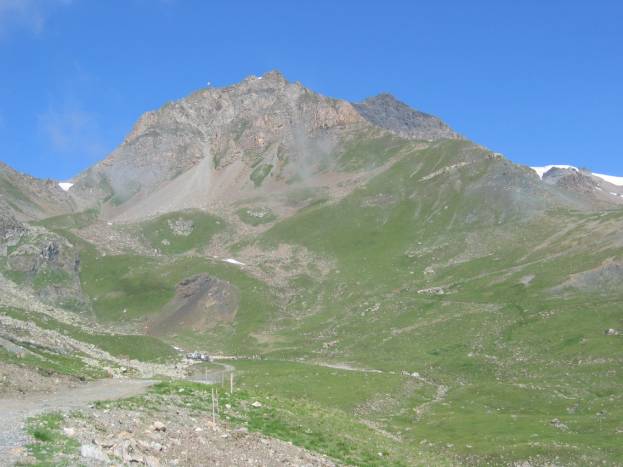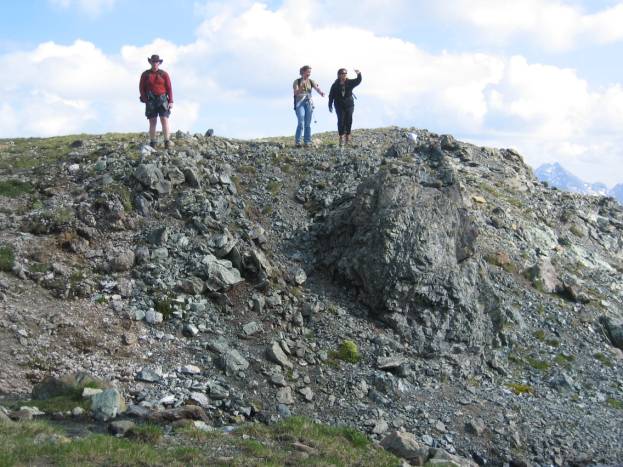




 |
 |
 |
 |
 |
Our objective was to examine both the Lower and Upper Tasna detachment faults, describe the nature of the fault rocks, and to evaluate the importance of detachment structures and their relationships to lower crustal rocks, mantle rocks, magmatic rocks and post-rift sediments. The Tasna nappe originated from the ocean-continent transition zone between the Brianconnais terrane (SE) and the Valais ocean (NW). Two detachment faults, the Lower Tasna Detachment (LTD) and the Upper Tasna Detachment (UTD) are preserved within the Tasna nappe (Figures 1 and 2 below). The LTD juxtaposes serpentinized mantle peridotite with continental basement of the Brianconnais across a mylonitic shear zone resulting from extensional faulting in Jurassic to Early Cretaceous time. The mylonite deforms pre-rift gabbro in the footwall and basement granite in the hanging wall. The younger UTD juxtaposes serpentinized peridotite with onlapping post-rift sediments and is marked by the presence of fault breccia and cataclasite. There was virtually no syn-rift magmatism. The following sequence of events
can be interpreted from the Tasna nappe: 1) pre-rift intrusion of gabbro
into future footwall of LTD, 2) LTD faulting at high temperatures, 3)
UTD faulting at lower temperatures, 4) deposition of post-rift sediments
|
 |
 The Tasna nappe; the Lower Tasna Detachment (LTD) is exposed on the right side of the photo. |
|

Graham Baines, Donna Shillington, and Elena Miranda look northwest towards an
exposure of the Lower Tasna detachment fault.
All three students are down with
‘O.C.T.’
Manatzschal, G. and Bernoulli, D.,
1999. Architecture and tectonic evolution of nonvolcanic margins: Present-day
Galicia and ancient Adria, Tectonics, v. 18, no. 6, p. 1099-1119.
Whitmarsh, R.B., Manatschal, G. and Minshull, T.A., 2001. Evolution of magma-poor
continental margins from rifting to seafloor spreading, Nature, v. 113, p. 150-153.
Froitzheim, N., and Rubatto, D., 1998. Continental breakup by detachment faulting:
field evidence and geochronological constraints (Tasna nappe, Switzerland),
Terra Nova, v. 10, p. 171-175.